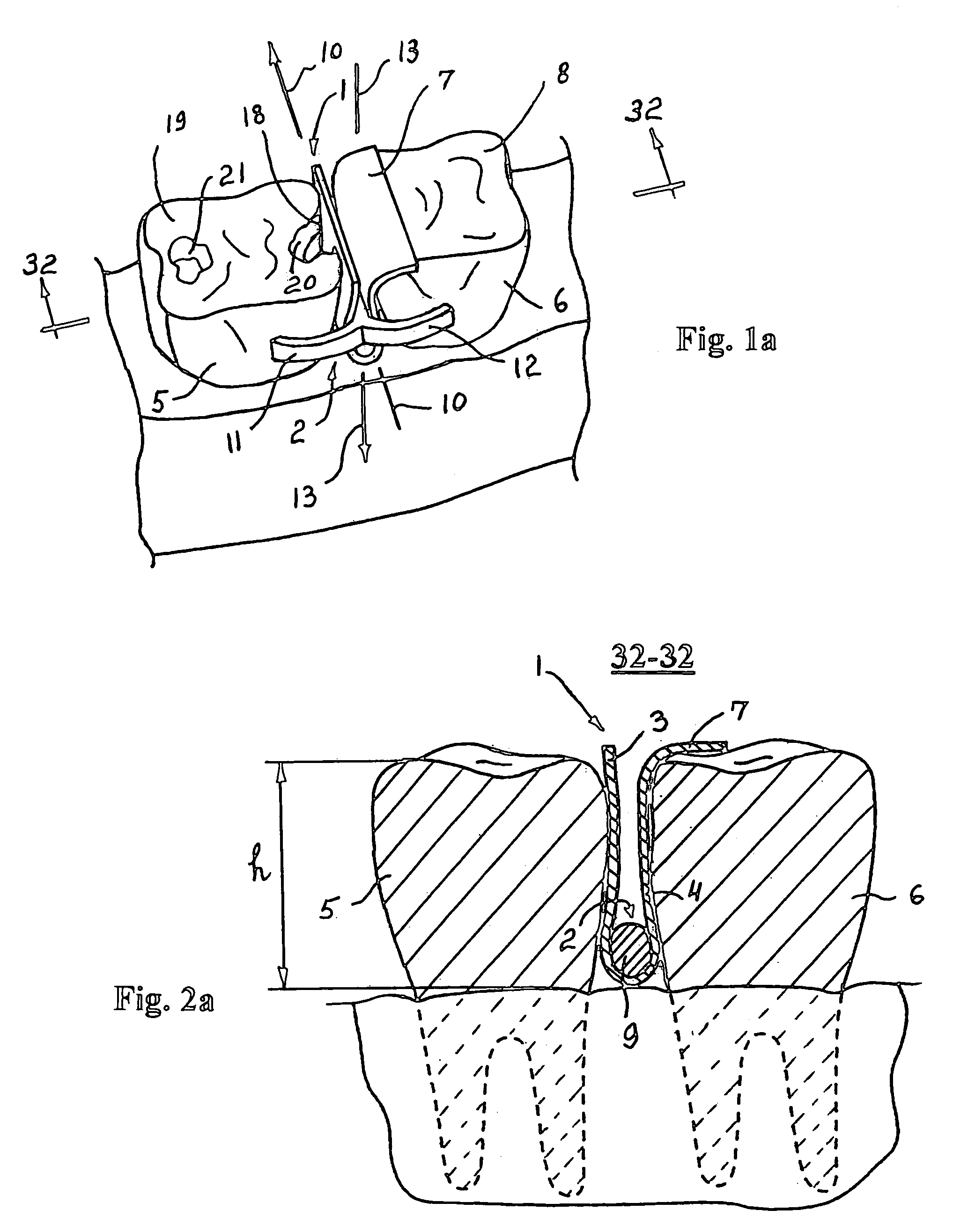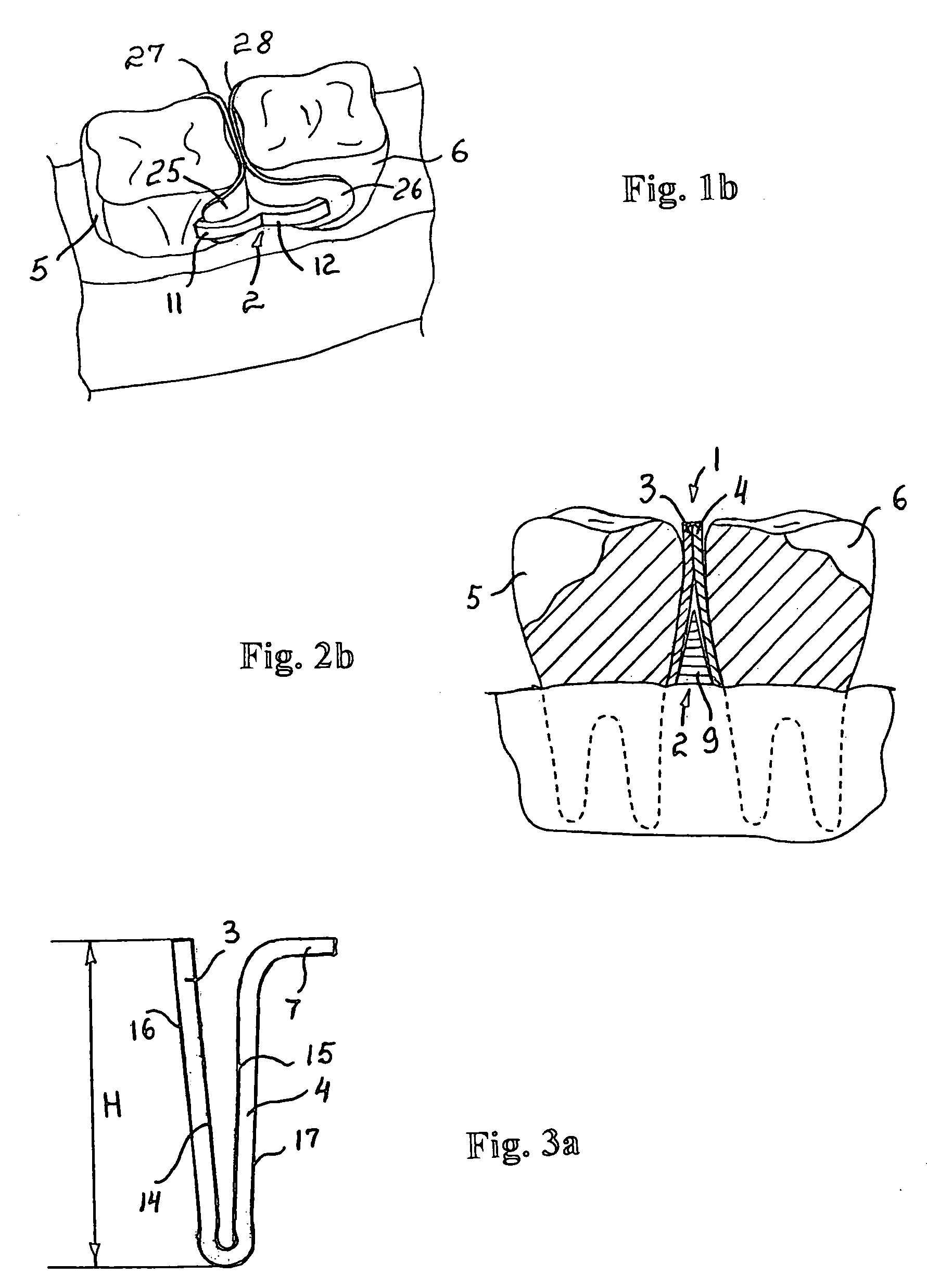Dental tooth spacer assembly
a tooth spacer and tooth technology, applied in the field of tooth spacers, can solve the problems of difficult forceful separation of adjacent teeth, inconvenient patient, and inability to fully fill the gap between the filled tooth and the adjacent tooth, so as to prevent gingiva or gum injury, reduce the amount of time required, and avoid the effect of affecting the patien
- Summary
- Abstract
- Description
- Claims
- Application Information
AI Technical Summary
Benefits of technology
Problems solved by technology
Method used
Image
Examples
Embodiment Construction
[0043]Herein the description of an improved dental tooth spacer assembly will be done in statics (as if the components of the improved device are suspended in the space) with the description of their relative coupling to each other. The description of the functional operations of the improved dental tooth spacer assembly will be done hereinafter.
[0044]An improved dental tooth spacer assembly, referring to FIG. 1a, includes a separating portion 1, having a V-shape configuration, and a fixing member 2. The separating portion 1 comprises a first wall 3 and a second wall 4. As it is shown in FIGS. 1a, 2a, the separating portion 1 is installed between the restoring tooth 5 and adjacent tooth 6 in the direction of the longitudinal axis 13. According to the side view of the separating portion 1 shown in FIG. 3a, the first wall 3 has a height “H”, which, for example, is slightly longer than the height “h” (see FIG. 2a) of the restoring tooth 5 (i.e. H>h), if needed when the first restoring ...
PUM
 Login to View More
Login to View More Abstract
Description
Claims
Application Information
 Login to View More
Login to View More - R&D
- Intellectual Property
- Life Sciences
- Materials
- Tech Scout
- Unparalleled Data Quality
- Higher Quality Content
- 60% Fewer Hallucinations
Browse by: Latest US Patents, China's latest patents, Technical Efficacy Thesaurus, Application Domain, Technology Topic, Popular Technical Reports.
© 2025 PatSnap. All rights reserved.Legal|Privacy policy|Modern Slavery Act Transparency Statement|Sitemap|About US| Contact US: help@patsnap.com



